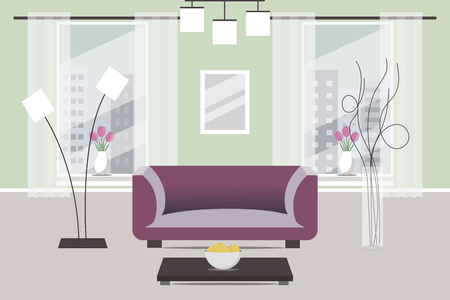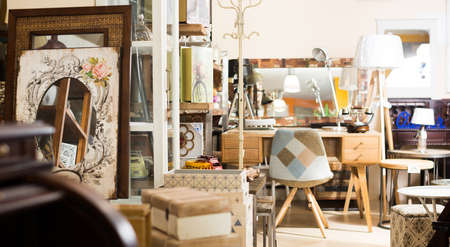Introduction to English Cottage Charm
There’s something undeniably inviting about the classic English cottage interior. Step inside and you’ll find rooms bathed in soft, natural light, textured with weathered wood, cosy nooks, and plenty of time-worn treasures. The beauty of this style lies in its warmth and authenticity—a lived-in feel that welcomes muddy boots as much as afternoon tea. At the heart of this charm is rustic furniture: sturdy, handmade pieces that tell a story through their gentle imperfections and practical design. Creating these authentic touches yourself brings not only character to your home but also a satisfying sense of accomplishment. In this article, we’ll explore how DIY rustic furniture projects can help you capture the spirit of the English countryside, making your space both functional and full of nostalgic comfort.
Choosing the Right Materials: Timber, Paints, and Finishes
When embarking on your own DIY rustic furniture projects for an authentic English cottage feel, selecting the right materials is essential. The heart of this style lies in its natural warmth and time-worn character, making your choices in timber, paints, and finishes truly matter. Let’s walk through a practical guide to sourcing sustainable wood, picking traditional chalk paints, and choosing finishes that echo the timeless charm of British homes.
Sourcing Sustainable Wood for Rustic Projects
The soul of any rustic piece is its timber. For a true English cottage vibe, opt for woods commonly found in British furniture-making—think oak, pine, ash, and beech. Always look out for FSC-certified suppliers or local reclamation yards; reclaimed wood not only adds history but also keeps things eco-friendly. Below is a quick reference table to help you choose:
| Wood Type | Appearance | Best Uses | Sustainability Tip |
|---|---|---|---|
| Oak | Grainy, durable, ages beautifully | Tables, chairs, benches | Choose FSC-certified or reclaimed boards |
| Pine | Pale with knots, easy to work with | Shelving, cupboards, dressers | Look for locally sourced pine offcuts |
| Ash | Smooth grain, light colour | Lighter furniture pieces | Use windfallen or storm-damaged ash when possible |
| Beech | Fine-grained, sturdy | Stools, side tables | Salvaged beech from old furniture works well |
Selecting Chalk Paints for That Classic Cottage Look
The hallmark of cottage furniture is its soft, matte finish—easily achieved with chalk paint. In Britain, chalk paints are available in hues inspired by the countryside: muted greens (sage), creamy whites (buttermilk), soft greys (pebble), and dusky blues. Not only are these paints forgiving for beginners, but they can be layered and distressed for that much-loved lived-in effect.
Top Tips When Choosing Paints:
- Opt for water-based chalk paints: They’re kinder to the environment and offer easy clean-up.
- Test samples on scrap wood: Lighting changes how colours appear indoors versus outdoors.
- Mix your own shades: Don’t be afraid to blend colours for a bespoke finish that feels truly personal.
Picking Authentic Finishes Found in British Homes
The right finish not only protects your project but also brings out the best of the wood’s character. Traditional British cottage furniture often uses waxes or oils rather than high-gloss varnishes. These finishes allow the timber to breathe while enhancing its natural texture.
| Finish Type | Main Features | Cottage Effect Achieved |
|---|---|---|
| Clear Wax | Nourishing & subtle sheen; easy to reapply over time | Aged patina; tactile feel; soft glow under natural light |
| Lime Wax/White Wax | Adds a limed effect; brightens grain; perfect for pale woods like pine or ash | Weathered look reminiscent of coastal cottages |
| Danish Oil/Linseed Oil | Pentrates deeply; enhances grain contrast | Rich colour depth; classic farmhouse appeal |
| Distressing Techniques (using sandpaper) | Makes edges and corners appear worn-in | Lived-in authenticity typical of vintage British pieces |
A Final Word on Material Selection:
Treat your materials as the foundation of every project—opting for sustainability not only supports the environment but ensures your finished piece carries the kind of genuine story that defines true English cottage style. With thoughtful sourcing and careful finishing touches, your DIY rustic furniture will feel right at home in any British-inspired space.

3. DIY Rustic Coffee Table with English Details
Step-by-Step Guide to a Charming Countryside Centrepiece
A rustic coffee table is the beating heart of any English cottage living room, perfect for setting down your tea or displaying a vase of wildflowers. Here’s how you can craft one yourself, using distressed wood and classic turned legs to capture that unmistakable cottage feel.
Materials You’ll Need
- Reclaimed or new pine planks (for the tabletop)
- Four traditional turned wooden legs (available at most DIY shops)
- Wood screws and brackets
- Sandpaper (medium and fine grit)
- Wood stain in an oak or walnut finish
- Chalk paint (optional, for a shabby chic touch)
- Clear wax or varnish
Instructions
1. Prepare Your Timber
Select your planks for the tabletop—reclaimed wood gives extra character with its knots and imperfections. Sand each piece thoroughly to remove splinters but leave enough texture for a weathered look.
2. Assemble the Tabletop
Lay your planks side by side, arranging them until you’re happy with the grain and colour variation. Attach battens across the underside using screws to secure the boards together, ensuring a sturdy surface.
3. Attach the Legs
Position each turned leg at the corners of the tabletop’s underside. Use sturdy brackets and screws to fix them in place. Make sure everything is square and level before tightening fully—no wobbly tables allowed!
4. Add Distressed Finishes
If you fancy that lived-in look, lightly distress the edges with sandpaper or a wire brush. For even more English charm, try a layer of chalk paint in soft cream or sage green, then gently sand it back to reveal hints of wood beneath.
5. Stain and Seal
Wipe away dust and apply your chosen wood stain for depth and warmth; oak or walnut shades work beautifully in British interiors. Once dry, finish with clear wax or varnish to protect against spills (and biscuit crumbs).
Tidying Tips for Cosy Living Rooms
This robust coffee table isn’t just beautiful—it’s practical too. Consider adding a lower shelf for magazines and baskets underneath for stashing throws or board games, keeping your lounge both organised and inviting, just like a true English cottage should be.
4. Handmade Bookshelves Inspired by the British Countryside
If you want your living space to echo the charm of an English cottage, nothing says “authentic” quite like a handmade bookshelf crafted from reclaimed timber or gently weathered wood. Whether you’re after a freestanding bookcase for your snug or a wall-mounted solution for the hallway, building your own bookshelves allows you to tailor each piece to both your space and your collection.
Choosing the Right Materials
Rustic bookshelves come alive with character when you use materials that tell a story. Salvaged oak beams, pine floorboards, or even old scaffold planks work beautifully. Sand them down just enough to highlight their natural grain, but leave a few knots and imperfections for that unmistakable countryside feel.
Freestanding vs Wall-Mounted: Which Suits Your Space?
| Freestanding | Wall-Mounted | |
|---|---|---|
| Best For | Larger rooms, flexible layouts | Small spaces, narrow hallways |
| Style Tip | Add bun feet or shaker-style legs for a classic touch | Use wrought iron brackets or leather straps for rustic detail |
| Practicality | Easy to move and reconfigure | Saves floor space; ideal for displaying collectibles above eye level |
Building Techniques & Finishing Touches
For a freestanding unit, assemble sturdy side panels and fixed shelves using traditional mortise-and-tenon joints—no visible screws if possible. For wall-mounted shelves, secure solid wooden planks with strong brackets into masonry walls (a must in many English cottages). Finish with beeswax polish or a gentle whitewash for that lived-in look. Don’t forget to round off corners and edges with fine sandpaper so your shelf feels as welcoming as it looks.
Proudly Displaying Your Books and Treasures
No English cottage is complete without rows of classic Penguin paperbacks in their iconic orange covers. Mix in pottery finds from local markets, enamelware, and framed pressed wildflowers for a personal touch. Arrange by colour or size for visual harmony—or embrace the charming chaos of a true country home.
5. Building Cosy Window Seats
If you’re aiming to capture the true spirit of an English cottage, few features evoke that homely charm quite like a snug window seat. These cosy nooks, often bathed in gentle natural light, have long been a staple in country homes—ideal for curling up with a good book and a cup of tea. The beauty of a DIY window seat is that it can be tailored precisely to your space while offering much-needed storage for blankets, baskets, or books.
Choosing the Right Spot
Start by identifying a window that welcomes plenty of daylight—bay windows or alcoves are particularly perfect. Consider how the sun moves through your home and choose a spot where you’ll want to linger on rainy British afternoons or crisp mornings.
Materials and Rustic Touches
For that authentic rustic look, opt for reclaimed timber or upcycled wood. Not only do these materials add character, but they also echo the eco-friendly sensibilities often found in English country cottages. Sand down rough edges but allow some knots and imperfections to show; these details bring warmth and personality to the finished seat.
DIY Construction Tips
Measure your window recess carefully and build a simple box frame from sturdy planks. Secure the frame directly beneath the window, leaving enough depth for comfortable seating. Add hinged lids or pull-out drawers beneath the seat for discreet storage—a practical solution inspired by generations of clever cottage living.
Styling Your Reading Nook
No window seat is complete without plush cushions and throws. Choose fabrics in soft checks or florals reminiscent of classic English interiors—think faded chintz or linen. Layer different textures for a lived-in feel, and don’t forget a scatter of hand-knitted blankets for those chilly evenings.
A Place to Pause
Ultimately, building your own rustic window seat isn’t just about furniture—it’s about creating a gentle pause in your day-to-day routine. This welcoming corner will become a cherished spot, whether you’re sipping your morning brew as the garden wakes up or simply enjoying the peaceful rhythm of rain against glass. It’s these small, thoughtful touches that truly bring an English cottage atmosphere to life.
6. Upcycling Tips: Give New Life to Vintage Furniture
If you’re keen to achieve that authentic English cottage feel, nothing beats the charm of upcycled vintage furniture. Sourcing pre-loved pieces not only brings character and history into your home, but is also a sustainable choice that supports the local community.
Scouring for Hidden Gems
Start your search at local charity shops, car boot sales, or even village jumble sales. These venues are brimming with unique finds – from weathered pine dressers to sturdy old chairs and farmhouse tables. Don’t be afraid of a little wear and tear; often, a simple sand-down and wax polish will reveal the beauty beneath years of use.
What to Look For
Seek out solid wood construction – oak, pine, or beech are typical in British homes and respond beautifully to restoration. Check for signs of woodworm or damage, but don’t be put off by surface scratches or outdated hardware; these can easily be addressed with some elbow grease and creative flair.
Adding Character Without Fuss
To maintain the rustic appeal, consider keeping original paintwork if it’s still charmingly chipped or faded. Alternatively, a coat of chalk paint in classic English hues like sage green or duck egg blue can instantly refresh a piece while preserving that lived-in look. Swapping out handles for antique brass or ceramic knobs picked up at markets can add an extra layer of personality with minimal effort.
Don’t forget soft furnishings—reupholstering a seat with floral linen or ticking stripe fabric can tie your new-old treasure into your overall cottage scheme. With a bit of patience and imagination, every upcycled find becomes a story woven into your home’s unique tapestry.
7. Styling and Accessorising: Finishing Touches for That Cottage Look
Once your rustic DIY furniture pieces are in place, it’s the little details that truly bring an authentic English cottage feel to life. Styling and accessorising are essential steps to create a home that feels both welcoming and uniquely British.
Handmade Cushions for Cosy Comfort
Nothing says “cosy” like a scatter of handmade cushions. Opt for soft, tactile fabrics such as cotton, linen, or even vintage floral prints, which are reminiscent of classic English country homes. Mix and match patterns—think delicate stripes paired with ditsy florals—to add depth and character to your space. A few oversized cushions on a weathered armchair or window seat instantly invite you to sit down with a cuppa.
Traditional Ceramics: Heart of the Home
Ceramics are woven into the fabric of British cottage culture. Displaying hand-thrown mugs, patterned plates, or a simple stoneware jug on an open shelf gives your kitchen or dining area that lived-in charm. Choose local pottery or look for vintage finds at car boot sales and charity shops—each piece tells its own story and brings warmth to your home.
Woven Baskets: Practical Beauty
Woven baskets are both practical and beautiful, embodying that sense of rustic orderliness. Use them for storing throws beside the sofa, holding fresh produce in the kitchen, or organising bits and bobs in the hallway. Look for natural materials like willow or seagrass; their earthy tones blend seamlessly with wooden furniture, adding texture without overwhelming the space.
British Textiles: Timeless Tradition
No English cottage is complete without traditional textiles. Think woollen throws from Yorkshire mills, tartan rugs, or even a patchwork quilt draped over the end of the bed. These pieces not only provide comfort but also celebrate Britain’s rich textile heritage. Layer different textures—knits, weaves, and crisp cottons—for a look that’s as inviting as it is authentic.
Curating Your Cottage Character
When styling your rustic DIY furniture, remember that imperfection is part of the charm. Let handmade elements shine alongside treasured family heirlooms or quirky flea market discoveries. Arrange accessories thoughtfully but avoid over-cluttering—leave room for each piece to breathe and be appreciated.
Final Thought
The finishing touches transform your house into a true English cottage retreat. By accessorising with love and intention—from hand-sewn cushions to well-loved ceramics—you create a space that feels genuinely welcoming every time you walk through the door.


